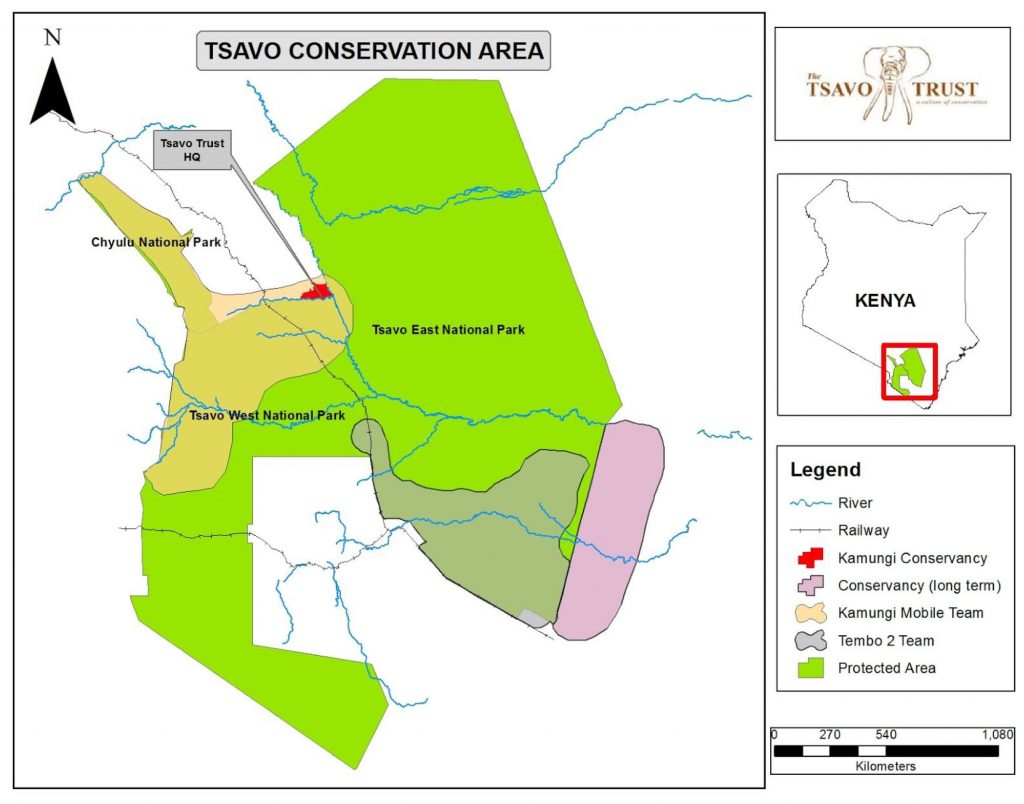In the modern world, elephant conservation is a multi-faceted endeavour. It is no longer enough just to track the elephants and patrol in search of poachers. Elephant conservation organisations like ours must also seek to change attitudes, lifestyles and influence political decision-making.
The trade of illegal ivory is still a huge market and, as we have seen in recent decades, the very public burning of huge stockpiles of ivory by the Kenya Wildlife Service has helped raise international awareness of the issue.
This is just one example of how conservation has evolved into more than just boots on the ground and planes in the sky.
Changing attitudes about wildlife conservation

One of the key indicators for successful conservation is the ability to change local and international attitudes.
This frequently boils down to instances of human-wildlife conflict that are distinct and separate from poaching. The truth is elephants can be a huge nuisance to local people. They trample crops and put people’s lives in danger.
To the international observer, these issues are often overlooked. It is too easy to see those who harm elephants as the bad guys in any situation.
Part of our work at Tsavo Trust is increasing transparency. We want international observers and donors to understand that the needs of local people must also be met and, we want the local people to understand that elephants can be a source of value to them and not just a nuisance to their way of life.
This goes for all wildlife. Megafauna and megaflora are valuable commodities, and they attract tourism and aid. We would argue that this aid should also help local people as it is they who must deal with the day-to-day reality of wildlife.

Changing lifestyles in aid of wildlife conservation
In addition to changing attitudes, lifestyles also need to change. This is what converts attitudinal changes into real, and effective measures to protect wildlife.
Our partner conservancies, Kamungi and Shirango, are a key part of achieving these changes. The conservancies themselves act as buffer zones to protect habitats and prevent encroachment by poachers.
The programs run by the conservancies are designed to ensure that the wildlife of the area is seen as an asset to the local people, rather than a liability. Encouraging eco-tourism, providing education, creating a system of personal finance, and business loans are all objectives that conservancies seek to turn into a reality.
The diversification of income streams is so important, and the pandemic has only highlighted this even further. The local people need to be able to fall back on their wildlife projects in times of need and poverty.
In addition to these ambitious conservancy projects, there are also other simple tactics such as using chili peppers, or honeybees, to prevent elephants from encroaching on crops. All of these strategies require education and training and that is what we seek to provide.
How to influence political decision-making regarding wildlife conservation

We are stronger together. Tsavo Trust, and indeed all conservation organisations in Kenya, would not be what they are today without the help of the Kenya Wildlife Service. The work they do is essential, and it provides the framework for us to do our job well.
When we work together, we can achieve great things. Everyone has a responsibility to protect the world’s wildlife, whether it is by providing organisations like ours, or any other organisation, with a small donation, or even lobbying local politicians to take the matter more seriously.
Currently, we partner with a huge number of awesome organisations and our family is always growing. Aside from our close relationship with KWS, we also have a great relationship with Save The Elephants, the Zoological Society London, the Disney Conservation Fund, and many more. A full list of our partners can be found on our website.
Many wildlife organisations feel right at home patrolling the ground and monitoring the skies, but this is just half the job of a modern conservation organisation. A lot of the work is done behind the scenes and is often powered by people, like yourself.

